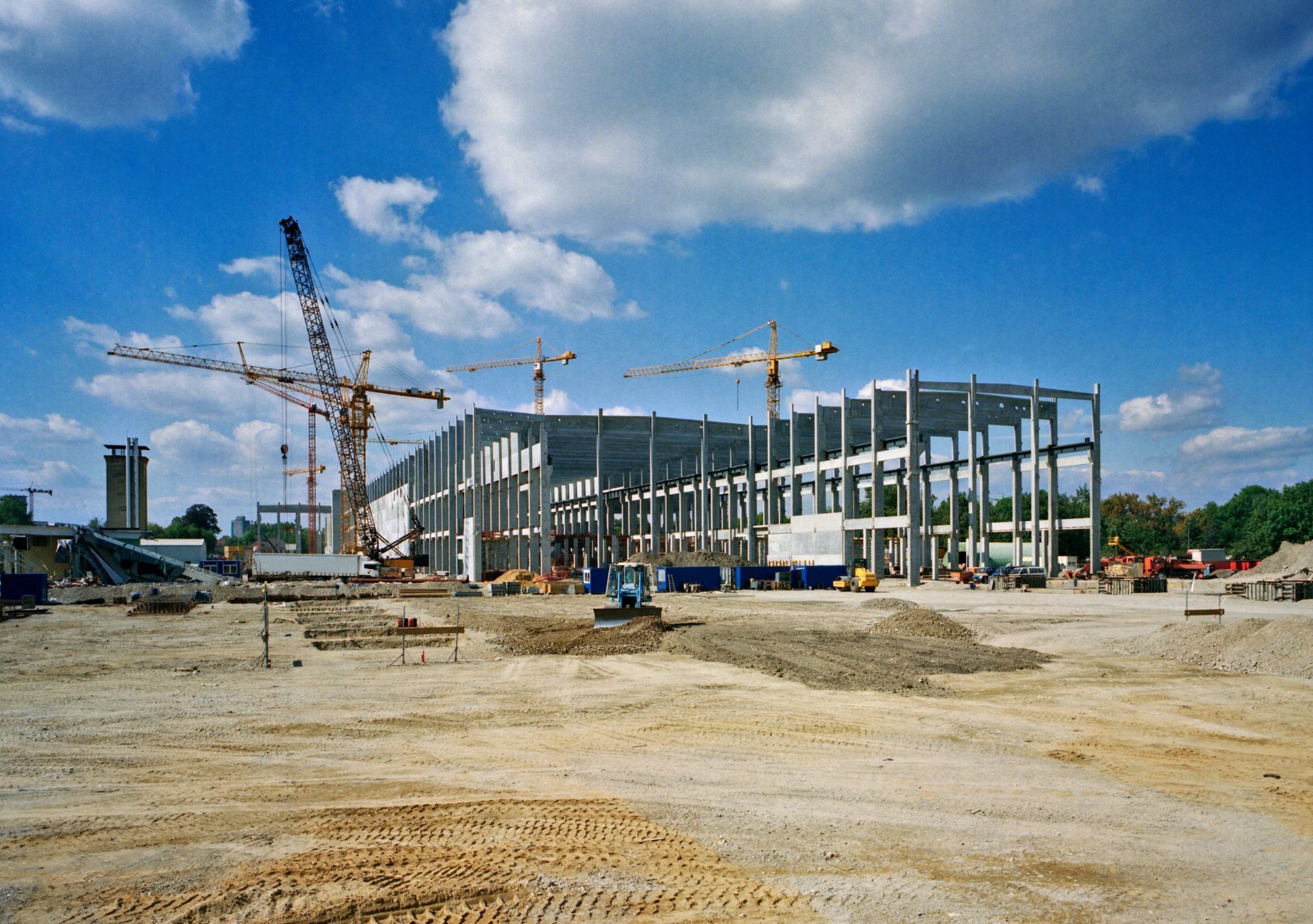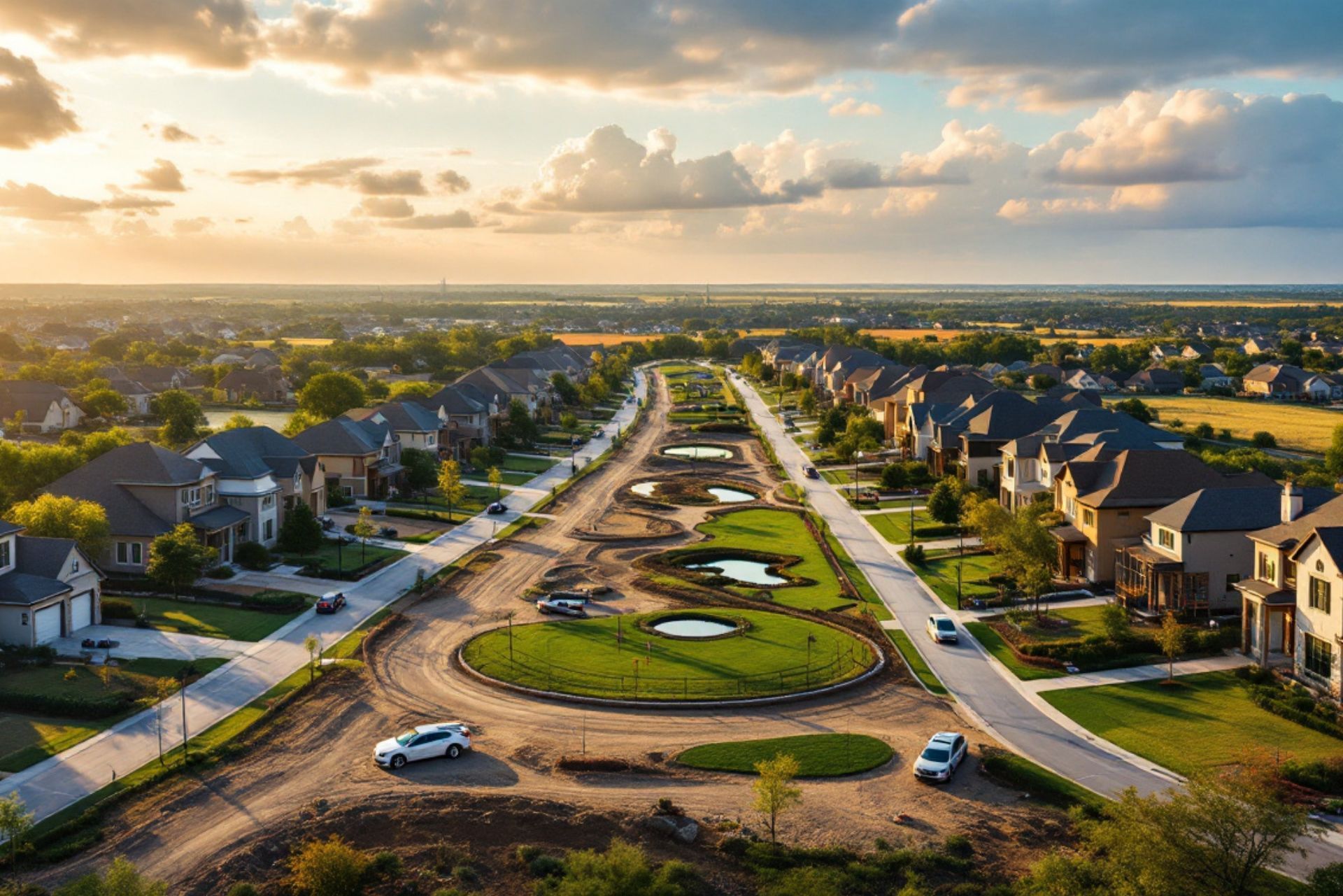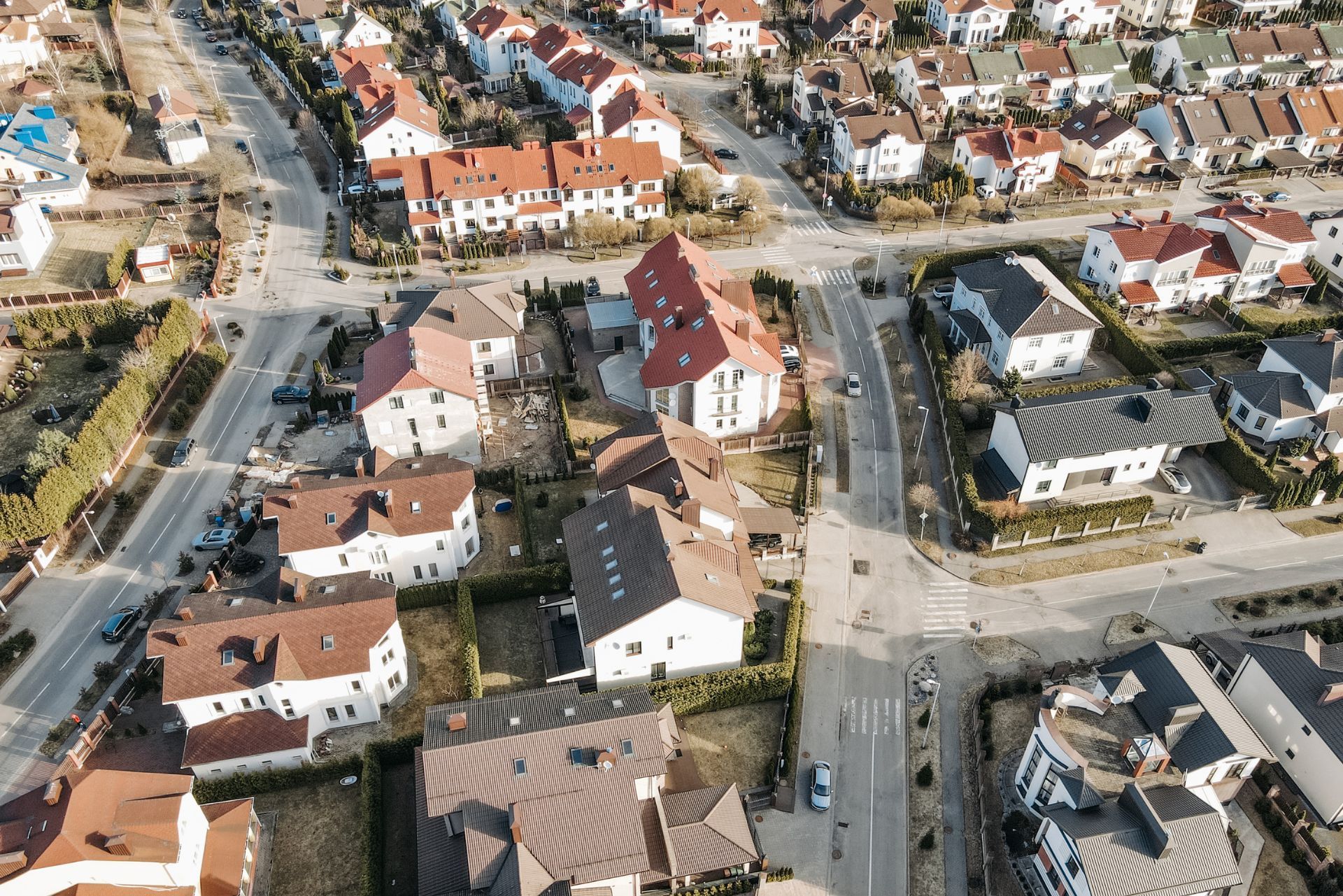
We're an independent insurance agency in Texas
Our experienced team offers services for both residential and commercial properties.With over 25 years of experience in the industry.
Contact Us
6600 Lyndon B Johnson Fwy Ste 220, Dallas, TX 75240, United States
(214) 253-0570
quotes@thephoenixinsurance.com
Working Hrs : 9.30am to 5.30pm

Most Common Business Policies
Index
Contact Us
Subdivision bonds are an integral part of the development process in Texas. They ensure that developers fulfill their obligations to construct infrastructure in new neighborhoods. Understanding the various aspects of subdivision bonds can help stakeholders, including developers, municipal officials, and investors, navigate the complexities of the bonding process effectively. This guide will cover the basics of subdivision bonds, their unique characteristics in Texas, the associated financial aspects, and much more.
Understanding the Basics of Subdivision Bonds
Before delving into the specifics of Texas subdivision bonds, it is crucial to grasp what subdivision bonds are and what role they play in real estate development.
Definition of Subdivision Bonds
Subdivision bonds are a type of surety bond that developers must obtain to ensure financial accountability and the successful completion of required public improvements within a subdivision. These public improvements typically include roads, drainage, water supply, and sewer systems. Essentially, a subdivision bond protects the public interest by guaranteeing that these essential infrastructure components will be constructed as stipulated by local regulations.
Purpose and Importance of Subdivision Bonds
The primary purpose of subdivision bonds is to provide municipalities with financial assurances that developers will meet their infrastructure obligations. By requiring such bonds, cities can safeguard against potential defaults, ensuring that public projects are completed on time and within budget. This accountability is vital in maintaining community standards and ensuring the health and safety of residents.
Additionally, the existence of subdivision bonds encourages responsible development practices. Developers are more likely to follow through on their commitments when there are financial penalties associated with non-compliance. This fosters trust between developers and local governments, promoting smoother collaboration throughout the development process.
Furthermore, subdivision bonds play a significant role in the overall economic development of a region. By ensuring that necessary infrastructure is in place, these bonds help attract potential buyers and investors, contributing to the growth of the local economy. A well-planned subdivision with reliable infrastructure can lead to increased property values and enhanced community appeal, making it a win-win for both developers and municipalities.
Moreover, the process of obtaining a subdivision bond often requires developers to engage with various stakeholders, including engineers, architects, and local government officials. This collaborative approach not only enhances the quality of the proposed developments but also ensures that the community's needs and preferences are taken into account. As a result, subdivision bonds serve as a catalyst for thoughtful planning and sustainable growth, ultimately benefiting both current residents and future generations.

Texas Subdivision Bonds: An Overview
In Texas, subdivision bonds have specific characteristics and requirements that differ from other states. Understanding these local specifics is necessary for anyone involved in Texas real estate development.
Specifics of Texas Subdivision Bonds
Texas subdivision bonds must conform to the laws and regulations administered by the Texas Commission on Environmental Quality (TCEQ) and local municipalities. The bonds may encompass not only public infrastructure but also any additional stipulations laid out by city ordinances. The bond amount is typically based on the estimated costs of the improvements and may require adjustments as project scopes change.
Furthermore, Texas allows for various types of bonds, including performance bonds, maintenance bonds, and cash alternatives, offering developers multiple options to meet their financial obligations. Performance bonds, for instance, ensure that the developer completes the project according to the agreed specifications, while maintenance bonds provide a safety net for the upkeep of the infrastructure for a specified duration after completion. This flexibility is particularly beneficial in a state where development projects can vary significantly in size and complexity, allowing developers to select the type of bond that best aligns with their project needs and financial strategies.
Legal Framework for Subdivision Bonds in Texas
The legal framework governing subdivision bonds in Texas is detailed in the Local Government Code as well as various state and local regulations. Developers must familiarize themselves with these laws to ensure compliance and avoid unnecessary complications during the bonding process.
Key legal considerations include understanding the bond execution requirements, delineating the roles of all parties involved, and knowing the processes for bond release upon project completion. Developers should consult legal experts familiar with Texas real estate law to navigate these complexities effectively. Additionally, it is essential for developers to stay informed about any changes in legislation or local ordinances that may affect bonding requirements, as these can evolve in response to economic conditions or community needs. Engaging with local government officials and attending relevant workshops can also provide valuable insights and foster relationships that may benefit future projects.
The Process of Obtaining Subdivision Bonds in Texas
Acquiring a subdivision bond in Texas involves a series of steps from initial planning to final submission. This section outlines the key stages in the process.
Pre-Application Considerations
Prior to applying for a subdivision bond, developers must engage in careful planning. This phase involves assessing the scope of the project, estimating improvement costs, and coordinating with local authorities to understand regulatory requirements.
Additionally, it's essential to assemble a team that includes engineers, surveyors, and legal advisors to ensure that all project specifications are met. Early communication with municipal officials can also provide insights into specific local requirements and streamline the application process. Understanding the local market conditions and potential environmental impacts is crucial, as these factors can significantly influence both project feasibility and the bond's terms. Developers should also consider community engagement strategies to address any concerns from residents, which can foster goodwill and support for the project.
Application Process and Requirements
The application process for a subdivision bond typically entails submitting detailed project plans, cost estimates, and any required documentation to the local government or relevant regulatory body. Developers must also identify a surety company that underwrites bonds and meets the financial assurance criteria.
Once submitted, local authorities will review the application to ensure compliance with all regulations. Upon approval, the developer will secure the bond, often paying a premium that reflects the risk involved in underwriting the bond. It is important for developers to maintain open lines of communication with the surety company throughout this process, as they may require additional information or adjustments to the project plans. Moreover, developers should be prepared for potential negotiations regarding the bond amount and terms, as these can vary significantly based on the project's complexity and the developer's financial history. Understanding the nuances of the bond market can provide developers with leverage in these discussions, ultimately leading to more favorable conditions for their projects.
Financial Aspects of Texas Subdivision Bonds
Understanding the financial components of subdivision bonds is crucial for developers and municipalities alike. This section addresses the costs involved and potential risks.
Costs and Fees Associated with Subdivision Bonds
The costs associated with obtaining a subdivision bond can vary significantly based on project size and complexity. Developers typically pay a premium to the surety company, which can range from 1% to 3% of the bond amount. Additional costs may include application fees, documentation expenses, and possibly legal fees associated with contract negotiations.
Budgeting for these costs early in the project can help developers maintain financial stability and avoid delays in the contracting process. Moreover, developers should also consider the potential for fluctuating market conditions, which can impact the overall costs of materials and labor. By conducting a comprehensive financial analysis that includes these variables, developers can create a more accurate budget and avoid unexpected financial strain as the project progresses.
Financial Risks and Mitigation Strategies
Financial risks inherent in subdivision bonds include the potential for default on construction obligations, which may incur penalties or loss of the bond's collateral. To mitigate these risks, developers can perform thorough due diligence on contractors and closely monitor the project's progress to ensure compliance with timelines and standards.
Establishing effective communication with stakeholders and having contingency plans in place can also help navigate unforeseen challenges, safeguarding the project's success and financial viability. Additionally, developers might consider diversifying their financing sources, such as exploring public-private partnerships or alternative funding mechanisms, which can provide a buffer against financial downturns. Engaging financial advisors who specialize in real estate development can further enhance a developer's understanding of the risks and opportunities associated with subdivision bonds, allowing for more informed decision-making throughout the project lifecycle.

Role of Different Parties in Subdivision Bonds
A variety of parties play roles in the subdivision bonding process, each with its own set of responsibilities. Understanding these roles can facilitate effective collaboration.
Responsibilities of the Developer
The developer is primarily responsible for initiating the bond process, providing accurate project information, and ensuring compliance with all local regulations. They must manage relationships with contractors and keep all parties informed about project developments.
Effective project management skills are essential as the developer coordinates construction activities, ensures timely completion of infrastructure, and prepares for the eventual release of the bond upon successful project completion. Moreover, the developer must also engage with local communities, addressing any concerns or feedback that may arise during the construction process. This interaction not only helps in building goodwill but also ensures that the project aligns with community expectations and needs, fostering a sense of ownership among residents.
Role of the Surety Company
The surety company acts as a third-party guarantor, offering financial backing for the subdivision bond. They assess the risk involved in underwriting the bond and evaluate the developer’s financial credentials and project viability.
The surety company also plays a critical role in the event of a default. Should the developer fail to meet their project obligations, the surety will step in to complete the work or compensate the municipality, thus protecting the public interest. Additionally, the surety company often provides valuable insights and industry expertise that can help the developer navigate potential pitfalls during the project lifecycle. Their experience in similar projects can guide the developer in making informed decisions, ultimately contributing to a smoother execution and completion of the subdivision.
Common Challenges and Solutions in Subdivision Bonds
While the bonding process is straightforward in theory, various challenges can arise during project execution. Understanding these challenges can facilitate better planning and execution.
Dealing with Delays and Defaults
Delays often stem from unforeseen circumstances such as weather, permitting delays, or contractor issues. Developers must remain vigilant and proactive, employing project management tools to track progress and deadlines effectively. Utilizing software that provides real-time updates can help identify potential bottlenecks early, allowing for timely interventions. Additionally, maintaining a flexible schedule can accommodate unexpected changes, ensuring that the project remains on track despite setbacks.
In cases where defaults occur, the surety company can manage the situation by hiring new contractors or changing project plans as needed. Clear communication with local authorities is vital in keeping stakeholders informed and minimizing disruptions. Furthermore, establishing a contingency plan before the project commences can provide a roadmap for addressing defaults, ensuring that all parties are prepared to act swiftly and efficiently should issues arise.
Dispute Resolution and Legal Remedies
Disputes can arise between developers, municipalities, and contractors regarding project execution and compliance. Engaging in open dialogue often resolves minor disagreements, but disputes may escalate to requiring legal intervention. It is crucial for all parties involved to document communications and decisions thoroughly, as this can serve as a valuable reference in case of disputes. Regular meetings can also foster a collaborative environment, reducing misunderstandings and promoting a sense of shared responsibility.
Establishing a clear dispute resolution process within contract agreements can mitigate future conflicts. In severe cases, local laws may necessitate legal remedies, such as mediation or arbitration, to settle disputes efficiently. Additionally, incorporating a third-party mediator into the agreement can provide an impartial perspective, facilitating a resolution that is acceptable to all parties. By prioritizing transparency and cooperation, developers can navigate the complexities of dispute resolution more effectively, ultimately leading to smoother project execution and stronger relationships with stakeholders.
Future Trends in Texas Subdivision Bonds
The landscape of subdivision bonds in Texas is continuously evolving due to economic factors and regulatory changes. Staying informed about these trends can help stakeholders adapt effectively.
Impact of Economic and Regulatory Changes
Economic fluctuations can affect the availability and cost of subdivision bonds. For instance, during economic downturns, bonding companies may tighten their underwriting criteria, making it more challenging for developers to obtain bonds.
Further, regulatory changes at the state level may introduce new requirements or modify existing laws, necessitating that developers stay updated to ensure compliance and optimal performance in the bonding process. For example, recent legislative efforts aimed at enhancing environmental protections may require developers to secure additional bonds to cover potential ecological impacts, thereby increasing the financial burden on new projects. This evolving regulatory landscape underscores the importance of proactive engagement with legal and financial advisors to navigate these complexities effectively.
Innovations and Developments in Subdivision Bonds
Technological advancements, such as digitization and automation, are beginning to play a significant role in the bonding process. Streamlined online applications, electronic documentation, and enhanced tracking systems make it easier for developers to manage their bonds efficiently.
Moreover, innovative financing models, including public-private partnerships, are emerging to facilitate robust infrastructure development while sharing costs and risks among stakeholders. These partnerships not only enhance the financial viability of large-scale projects but also promote community involvement and transparency in the development process. Additionally, the rise of blockchain technology is poised to revolutionize how bonds are issued and tracked, potentially reducing fraud and increasing trust among all parties involved. As these innovations take hold, they will likely reshape the future of subdivision bonds in Texas, making the process more accessible and secure for developers and investors alike.
As the market continues to adapt, stakeholders must remain vigilant and responsive to these changes, ensuring they leverage new tools and strategies to optimize their bonding processes. The interplay between technology, finance, and regulation will undoubtedly define the next chapter in Texas's real estate landscape, presenting both challenges and opportunities for those engaged in subdivision development.

